If you have been thinking of starting a 401(k) plan for your employees, now may be the time to take that step. Retirement savings plans are a huge benefit to employees and can be used to recruit and retain top talent. Congress passed legislation that eases the process to help your employees save for retirement.
The SECURE 2.0 Act has established a new type of retirement plan called a “starter 401(k) deferral-only arrangement”, also known as a Starter 401(k) plan, effective for plan years after December 31, 2023. This is not to be confused with a SIMPLE 401(k) plan, which was established under the Small Business Job Protection Act of 1996.
The key difference between Starter 401(k) plans and Simple 401(k) plans lies in the contributions. Under a Starter 401(k) plan, employers are required to make contributions. Employers are prohibited from making contributions in a SIMPLE 401(k) plan. Another difference is the IRS limit on contributions. For 2023, the limit is $15,500 per employee for SIMPLE 401(k) plans and $6,000 for Starter 401(k) plans. For employees older than 50 years of age, a “catch-up” contribution of an additional $3,500 is permitted to be made for a SIMPLE 401(k) plan and $1,000 for a Starter 401(k) plan.
Who is eligible for a Starter 401(k)?
- Employers that have less than 100 employees who each earned $5,000 or more during the previous year.
- Employees who have earned at least $5,000 or more during either of the two previous years and who also expect to earn at least $5,000 or more in the current year are eligible to participate in a Starter 401(k) plan. Employees who are at least 21 years old and have completed at least one year of service are eligible to participate. It is important to note that while employers are required to make contributions to the Plan, employees are not required to make contributions.
Key features of the Starter 401(k) plan are as follows:
- Easier Plan Administration. Starter 401(k) plans are designed to be inherently easier to administer than a traditional 401(k) plan. This is due to fewer compliance requirements and administrative responsibilities. The goal is to make these plans more accessible for small businesses.
- Employee Contributions. Employees are permitted to make contributions to their Starter 401(k) plan automatically through payroll. The employee determines the amount of compensation they would like to defer up to an annual limit set by the IRS. The limit for 2023 is $6,000 for employees under 50 and $7,000 for employees over 50.
- Employer Contributions. Under a Starter 401(k) plan, employers are required to make either (1) matching contributions or (2) non-elective contributions to their employee’s account. Matching contributions are a dollar-for-dollar match of the contribution that an employee makes, usually up to a certain amount of the employee’s compensation. Non-elective contributions are contributions that are equal to a pre-determined percentage of an employee’s compensation that is given to every eligible employee in the company, regardless of whether or not that employee elects to participate in the 401(k) plan. It is important to note that these provisions apply to new 401(k) plans established after a certain date, in this case, 2025. These provisions do not apply to existing plans. Additionally, the specific details of the automatic enrollment provisions may vary from plan to plan.
If you don’t currently have a traditional 401(k) plan and you’re looking to start one, you should be aware of the following provisions the SECURE 2.0 Act has implemented:
- Auto Enrollment. Beginning in 2025, any new 401(k) plans that are established will need to have an automatic enrollment feature. This provision will automatically enroll eligible participants at a deferral rate between 3% and 10%. The employee’s deferral rate will automatically increase at the rate of 1% per year until the participant is deferring between 10-15% of their compensation. Participants can opt out of the automatic enrollment and automatic deferral increases by signing an opt-out waiver. Additionally, participants who did not wish to participate and did not sign an opt-out waiver and were automatically enrolled have the option to withdraw any contributions that were made up to 90 days after the first contribution was made without incurring any early withdrawal penalties.
- Tax incentives for small businesses. For employers with less than 50 employees who wish to start a 401(k) plan, the SECURE 2.0 Act allows a tax credit for 100% of startup costs that are incurred. Employers are eligible for this credit for the first three years of the plan. This credit can begin to be claimed in the tax year immediately before the tax year in which the plan becomes effective.
- Additionally, employers can receive additional credits for employer contributions made up to $1,000 per employee for the first five years the plan is active. This credit has a phase out period over the five years. Finally, participant disclosures are cut back, further reducing the cost of administration.
- Student Loan Match. Starting in 2024, employers can make a matching contribution to their employees’ 401(k) plans equal to the student loan repayments they are making. This helps lessen the burden on employees who have to decide whether to pay off debt or save for retirement.
- Employer Roth contributions. New provisions under the SECURE 2.0 Act now permit employers to make matching contributions to their employee’s Roth 401(k) accounts. Previously, employer contributions could only be made to pre-tax accounts.
Employers play a critical role in helping employees achieve financial security in retirement. Providing this benefit to employees can be essential in attracting and retaining top talent at your company. Understanding the potential implications of the SECURE 2.0 Retirement Savings Act is essential for fulfilling your responsibility in administering a 401(k) plan, and your advisors at WG are here to help. By staying informed, communicating effectively with future participants, and adapting retirement plans as needed, employers can begin to support employees on their journey toward financial freedom in retirement. Please contact your trusted WG advisor with any questions on how we can help you to best support your employees’ future.





